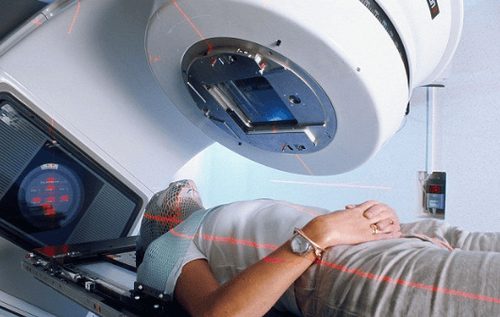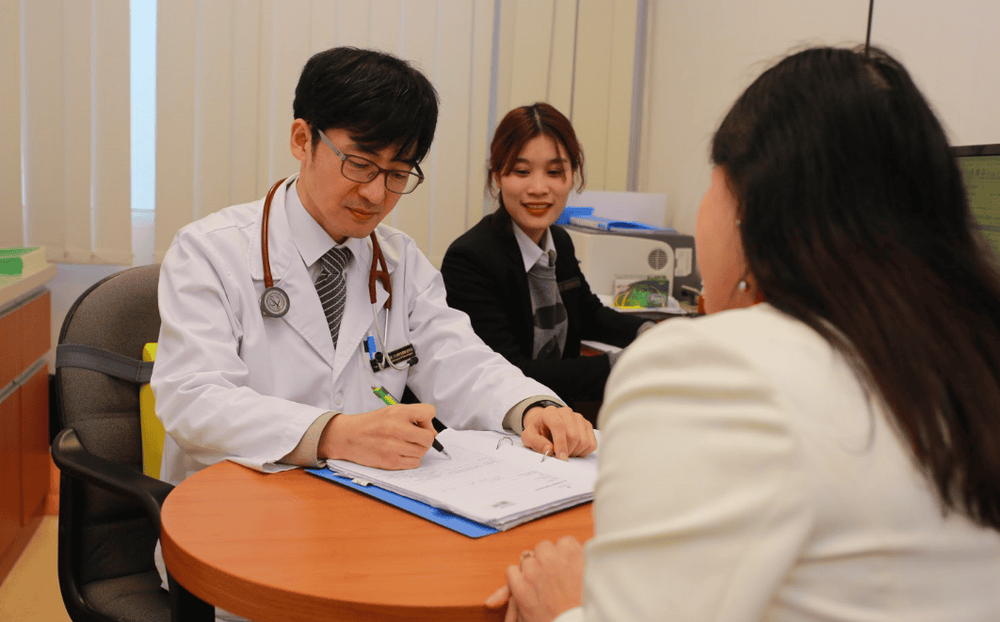This is an automatically translated article.
Radiation therapy for nasopharyngeal cancer is a physical method that uses high-energy beams to destroy cancer cells or slow the growth and spread of tumors. Radiation therapy is used as the mainstay of treatment and gives good results if the patient is treated early.1. Radiation therapy for nasopharyngeal cancer
Radiation therapy for nasopharyngeal cancer is the main treatment for nasopharyngeal cancer today. In the early stages, the disease can be treated with radiation therapy alone, with a dose of radiation 5 days a week, lasting from 6 to 8 consecutive weeks. In addition to the classic radiotherapy techniques (such as radiation therapy using Cobalt rays, radiation therapy using accelerators), many cancer centers have implemented advanced radiotherapy techniques such as: three-dimensional simulation radiation therapy. , dose-modulated radiation therapy...
These new techniques give a high cure rate, and at the same time significantly reduce the side effects of radiation therapy on the patient's body. At the late detection stage, surgery is almost impossible and radiation therapy is the first measure.

Xạ trị là biện pháp làm giảm tác dụng phụ khi điều trị ung thư vòm họng
2. Types of radiation therapy
Depending on the disease condition and treatment purpose, there are 2 types of treatment:
External radiation therapy: Treatment of nasopharyngeal cancer Internal radiation therapy: Applied in case of recurrent nasopharyngeal cancer
3. Radiation therapy
3.1. Radiotherapy alone is mainly used in the early stages of nasopharyngeal cancer, mainly in stages 1 and 2. The doctor will assess the extent of the tumor's spread, the size of the tumor's location. to provide a specific treatment solution.
3.2. Radiation therapy combined with chemotherapy If the disease is detected at an early stage (when the lesions are still localized in the nasopharynx and have not metastasized far) and treated promptly and with the correct regimen, the cure rate is relatively high. The 5-year survival rate can be up to 70-90%.
After radiation therapy, it is possible to combine chemotherapy and radiation therapy; chemotherapy is given first, then radiation is followed; or radiotherapy, continue chemotherapy... depending on the stage of the disease. This is a late stage treatment solution.
3.3. Radiation therapy relieves symptoms In the final stage, complete cure is very difficult, so at this stage, radiation therapy mainly reduces the symptoms of bone pain, pain when swallowing, breathing as well as shrinking the tumor for the patient. .

Gặp ngay bác sĩ khi có bất cứ một dấu hiệu bất thường sau xạ trị
4. Complications of radiation therapy for nasopharyngeal cancer
Before radiotherapy to the nasopharyngeal area, the doctors will carefully examine the patient's oral cavity. Usually, radiation treatments to the head or neck, especially in the nasopharynx or larynx, tonsils, more or less will affect the teeth and mouth.
Clinical symptoms no matter how we monitor, no matter how modern techniques are used, they also leave certain sequelae, which are dental and oral sequelae. The sequelae are usually gingivitis, gingival necrosis, sclerosis of the temporomandibular joints, sclerosis or gangrene... in many severe cases, there may be necrosis of the maxillary bone, necrosis of the mandible due to radiation. caused treatment.
5. Cost of radiation therapy for nasopharyngeal cancer
The cost of cancer radiation therapy can be very large because to treat nasopharyngeal cancer, patients need a long time to treat. The cost will depend on many different factors, depending on the doctor's assessment of the patient's health and cancer status.
During the course of treatment, the patient can lose hundreds of millions of dong depending on the severity of the disease. Therefore, to save costs for radiation therapy for oropharyngeal cancer, patients can join health insurance to reduce costs and improve efficiency, avoiding financial stress during the treatment process. cure.
6. Note when radiation therapy for nasopharyngeal cancer

Tầm soát ung thư vòm họng định kỳ nhằm phát hiện và điều trị sớm
The patient's spirit is the most important factor affecting the treatment results, the patient should keep an optimistic spirit and should not be too worried. The duration of radiation therapy is from 2 to 7 weeks, the number of treatments will depend on the patient's condition. Avoid smoking and stimulants such as alcohol to reduce the risk of nasopharyngeal cancer recurrence as well as keep the health of the nasopharynx better, increasing the effectiveness of treatment. After undergoing radiation therapy or chemotherapy, patients need to regularly practice opening their mouth and massaging the neck area to reduce the side effects of the treatment. Limit the intake of fermented foods such as pickles, salted fish, salted eggplant... In addition, to help people detect throat cancer early, doctors recommend that people raise awareness. the importance of screening for oropharyngeal cancer as well as regular health check-ups.
The package of screening, and early detection of oropharyngeal, pharyngeal, and laryngeal cancers at Vinmec International General Hospital includes:
Full range of necessary services for early detection of oropharyngeal cancer Detecting abnormalities When registering for the screening package, and early detecting cancer of the oropharynx, pharynx, larynx, customers will be screened for nasopharyngeal - hypopharyngeal - laryngeal cancer. through general otolaryngology examination with hard or soft endoscope; Software ultrasound, thereby detecting the disease early, improving the effectiveness of treatment, increasing the survival rate for patients.
You can find out more about the screening package and early detection of nasopharyngeal cancer as well as other service packages of Vinmec International General Hospital HERE.
MORE:
Why oropharyngeal cancer screening is the best way to prevent cancer today Nasopharyngeal cancer in women: What you need to know Signs of oropharyngeal cancer in children













